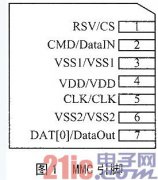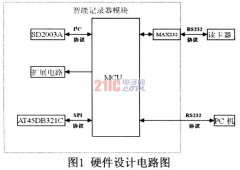stm32休眠 以及休眠中如何喂狗 -
[导读] 在STM32开发中经常会用到独立看门狗(IWDG)和低功耗模式,看门狗是为了检测和解决由软件错误引起的故障,低功耗模式是为了在CPU不需要继续运行时进入到休眠模式用以节省电能。其中独立看门狗的时钟由独
本文引用地址: http://www.21ic.com/app/mcu/201804/764248.htm
在STM32开发中经常会用到独立看门狗(IWDG)和低功耗模式,看门狗是为了检测和解决由软件错误引起的故障,低功耗模式是为了在CPU不需要继续运行时进入到休眠模式用以节省电能。其中独立看门狗的时钟由独立的RC振荡器(STM32F10x一般为40kHz)提供,即使在主时钟出现故障时,也仍然有效,因此可以在停止和待机模式下工作。而且独立看门狗一旦启动,除了系统复位,它不能再被停止。但这样引发的一个问题是当MCU进入到低功耗模式后由于CPU停止运行无法喂狗,会导致系统频繁复位。那如何解决这个问题呢,难道独立看门狗和低功耗模式没法同时使用?
一个很好的方式是在休眠模式下通过RTC定时唤醒来喂狗,喂完够在进入继续进入到休眠模式。比如看门狗复位的时间间隔为10s。那么在进入休眠模式前设置RTC闹钟中断时间为5s。这样每隔5s唤醒一次喂一次狗。便可以很好的解决这个问题。
while(1)
{
// 执行任务
Task1();
Task2();
// ..
// 喂狗
dev_iwdg_feed();
// 进入待机模式开关
if(m_bEnterStandByMode)
{
// 使能外部中断,GPIOB3,用以MCU从待机模式唤醒
dev_exti_enable(TRUE);
ENTERSTOPMODE:
// 设置RTC闹钟,5秒钟产生一次RTC闹钟中断*/
dev_rtc_setAlarm(5);
// 进入停止模式(低功耗),直至外部中断触发时被唤醒
PWR_EnterSTOPMode(PWR_Regulator_LowPower, PWR_STOPEntry_WFI);
// 是否是RTC闹钟中断唤醒
if(dev_rtc_isAlarm())
{
// 喂狗
dev_iwdg_feed();
// 喂完狗继续进入停止模式
goto ENTERSTOPMODE;
}
// 禁止外部中断
dev_exti_enable(FALSE);
// 从停止模式唤醒后恢复系统时钟
dev_clk_restore();
}
}
以下是完整的代码:
//**********************************************************************************************
// STM32F10x StopMode RTC Feed Dog
// compiler: Keil UV3
// 2013-01-04 , By friehood
//**********************************************************************************************
#include "stm32f10x_lib.h"
#include "platform_config.h"
static Boolean g_bRTCAlarm = FALSE;
/*******************************************************************************
* Function Name : RCC_Configuration
* Description : Configures the different system clocks.
* Input : None
* Output : None
* Return : None
*******************************************************************************/
void RCC_Configuration(void)
{
/* RCC system reset(for debug purpose) */
RCC_DeInit();
/* Enable HSE */
RCC_HSEConfig(RCC_HSE_ON);
/* Wait till HSE is ready */
if(RCC_WaitForHSEStartUp() == SUCCESS)
{
/* Enable Prefetch Buffer */
FLASH_PrefetchBufferCmd(FLASH_PrefetchBuffer_Enable);
//FLASH时序控制
//推荐值:SYSCLK = 0~24MHz Latency=0
// SYSCLK = 24~48MHz Latency=1
// SYSCLK = 48~72MHz Latency=2
//FLASH_SetLatency(FLASH_Latency_1); //警告:修改为1会对DMA值有影响(如ADC采集值会错位)
FLASH_SetLatency(FLASH_Latency_2);
/* HCLK = SYSCLK */
RCC_HCLKConfig(RCC_SYSCLK_Div1);
/* PCLK2 = HCLK */
RCC_PCLK2Config(RCC_HCLK_Div1);
/* PCLK1 = HCLK/2 */
RCC_PCLK1Config(RCC_HCLK_Div2);
/* PLLCLK = 12MHz * 3 = 36 MHz */
RCC_PLLConfig(RCC_PLLSource_HSE_Div1, RCC_PLLMul_3);
/* Enable PLL */
RCC_PLLCmd(ENABLE);
/* Wait till PLL is ready */
while(RCC_GetFlagStatus(RCC_FLAG_PLLRDY) == RESET)
{
}
/* Select PLL as system clock source */
RCC_SYSCLKConfig(RCC_SYSCLKSource_PLLCLK);
/* Wait till PLL is used as system clock source */
while(RCC_GetSYSCLKSource() != 0x08)
{
}
}
/* Enable PWR and BKP clock */
RCC_APB1PeriphClockCmd(RCC_APB1Periph_PWR | RCC_APB1Periph_BKP, ENABLE);
/* Enable AFIO clock */
RCC_APB2PeriphClockCmd(RCC_APB2Periph_AFIO, ENABLE);
}
/*******************************************************************************
* Function Name : NVIC_Configuration
* Description : Configures the nested vectored interrupt controller.
* Input : None
* Output : None
* Return : None
*******************************************************************************/
void NVIC_Configuration(void)
{
NVIC_InitTypeDef NVIC_InitStructure;
#ifdef VECT_TAB_RAM
/* Set the Vector Table base location at 0x20000000 */
NVIC_SetVectorTable(NVIC_VectTab_RAM, 0x0);
#else /* VECT_TAB_FLASH */
/* Set the Vector Table base location at 0x08000000 */
NVIC_SetVectorTable(NVIC_VectTab_FLASH, 0x0);
#endif
/* Configure one bit for preemption priority */
NVIC_PriorityGroupConfig(NVIC_PriorityGroup_1);
}
/*******************************************************************************
* Function Name : SysTick_Configuration
* Description : Configures the SysTick to generate an interrupt each 1 millisecond.
* Input : None
* Output : None
* Return : None
*******************************************************************************/
void SysTick_Configuration(void)
{
/* Select AHB clock(HCLK) as SysTick clock source */
SysTick_CLKSourceConfig(SysTick_CLKSource_HCLK);
/* Set SysTick Priority to 3 */
NVIC_SystemHandlerPriorityConfig(SystemHandler_SysTick, 3, 0);
/* SysTick interrupt each 1ms with HCLK equal to 72MHz */
SysTick_SetReload(72000);
/* Enable the SysTick Interrupt */
SysTick_ITConfig(ENABLE);
}
/*******************************************************************************
* Function Name : Delay
* Description : Inserts a delay time.
* Input : nTime: specifies the delay time length, in milliseconds.
* Output : None
* Return : None
*******************************************************************************/
void Delay(u32 nTime)
{
/* Enable the SysTick Counter */
SysTick_CounterCmd(SysTick_Counter_Enable);
TimingDelay = nTime;
while(TimingDelay != 0);
/* Disable the SysTick Counter */
SysTick_CounterCmd(SysTick_Counter_Disable);
/* Clear the SysTick Counter */
SysTick_CounterCmd(SysTick_Counter_Clear);
}
/*******************************************************************************
* Function Name : RTC_Configuration
* Description : Configures RTC clock source and prescaler.
* Input : None
* Output : None
* Re
查看评论 回复









